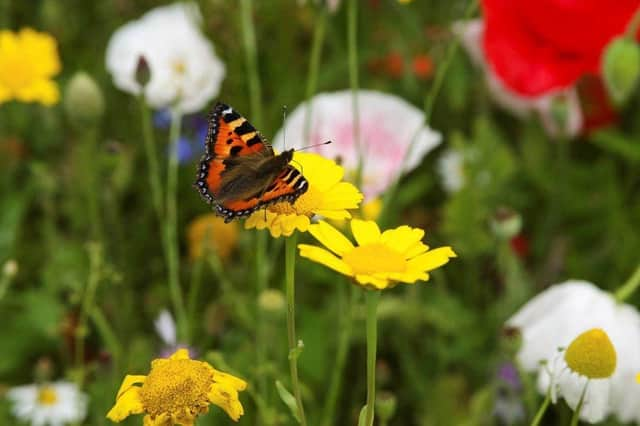RSPB says create space for nature this May


In our gardens, it’s a busy time of year too, and even the non-gardeners among us can be spurred into action by a spell of sunny weather.
It might surprise you to find out that one of the easiest ways to help wildlife this month, is to put your feet up and do nothing at all.
Advertisement
Hide AdAdvertisement
Hide AdBy taking part in No Mow May, giving your mower a little rest and letting the grass grow, you’ll be giving our pollinators a much-needed helping hand.
You never know what blooms might pop up in your lawn. Like me, you’ll probably have plenty of dandelions (which are actually great early sources of pollen and nectar), but you could end up with some more unusual flowers such as wild orchids too. If you aren’t willing to fully embrace an unruly lawn, mowing a border around your blocks of longer grass, or curving paths through the middle, can make your lawn look neat, whilst still helping to create a wildlife haven.
Keep an eye out for butterflies such as the bold red peacocks and tortoiseshells flitting among the flowers, or colourful goldfinches who can’t resist feasting on dandelion seeds.
It’s worth remembering that birds are still busy nesting this month, so it’s best to leave any hedgerow trimming until the main nesting season is over in September – or better yet, hold off until the berry season is over in winter.
Advertisement
Hide AdAdvertisement
Hide AdOur hedgerows are a vital resource for wildlife, they form connecting corridors between habitats and nesting spots, shelter and food sources for many species.
Many of the actions we can take for nature in our gardens on a small scale, can be replicated on a larger scale in countryside, and RSPB NI works over 400 farmers and landowners, providing practical advice and support.
Actions such as good hedgerow management, growing rough grass margins or winter seed crops, are some of the steps that landowners can take to help wildlife thrive.
Earlier this week, we launched a new series of videos to showcase the funded options available through the Environmental Farming Scheme to help landowners give nature a home on their working land. For more information visit rspb.org.uk/ni.
Comment Guidelines
National World encourages reader discussion on our stories. User feedback, insights and back-and-forth exchanges add a rich layer of context to reporting. Please review our Community Guidelines before commenting.